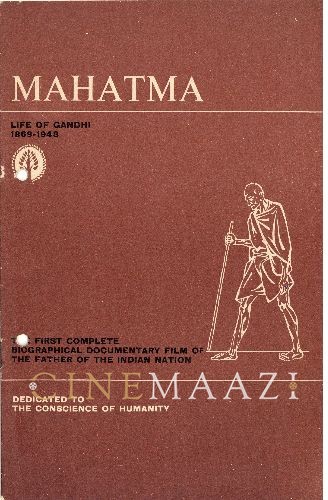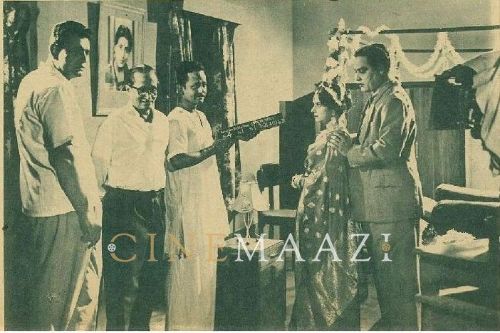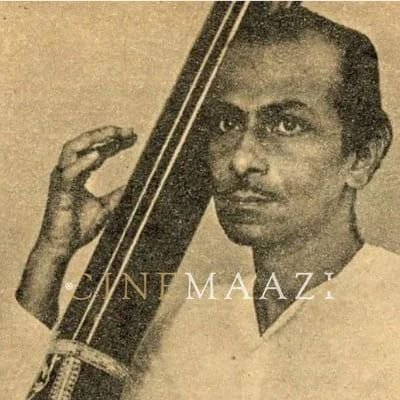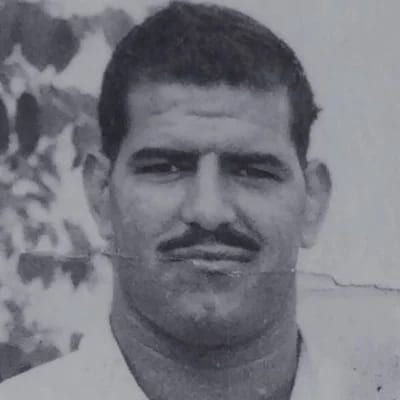This section is for paid subscribers only. Our subscription is only $3700/- for one full year.
You get unlimited access to all paid section and features on the website with this subscription.
Subscribe to read full article
This section is for paid subscribers only. Our subscription is only $37/- for one full year.
You get unlimited access to all paid section and features on the website with this subscription.
Not ready for a full subscription?
You can access this article for $2, and have it saved to your account for one year.
- Release Date1968
- GenreDocumentary
- FormatB/W
- LanguageHindi, English
- Run Time5 hr 30 min
This is the first complete audio-visual documentary biography of Mohandas Karamchand Gandhi. All events and principles of Gandhi's life and thought are viewed as integrated parts of his truth-intoxicated life depicting permanent and universal values and not merely as stray events of history.
The purpose of the film is to tell the present and the future generations "that such a man as Gandhi in flesh and blood walked upon this earth", to acquaint them with his life and work and to spread his message of peace and universal brotherhood to the war-weary and fear-stricken world--a message that is bound to endure and grow in the understanding of man.
In accordance with this aim, we have tried to translate Gandhi's ideas in celluloid which involved many years of deep research and hard labour. The film brings together a mass of visual record not only of 78-year life of Gandhi but also of an important period of India's history.
"No man can write a real life of Gandhi", wrote Jawaharlal Nehru, "unless he is as big as Gandhi". If it is difficult to write a biography of Gandhi, perhaps it is more difficult to prepare a biographical documentary film of his life-that too under all kinds of limitations.
Every possible attempt is made to see that the film remains documentary in - the full sense of the term. The aim of the film being education and not entertainment, there is no attempt at dramatization of those exciting times. The story is told with an eye to truthful documentation of the main events within the limits of available documentary visual material. It is hoped that though no attempt is made at embellishment, truth itself stated, as far as possible, in Gandhi's words in all its dignity and simplicity would convey the message to the audience with directness and precision characteristic of Gandhi's utterances and writings.
We have tried to organise and give shape to the scattered film material on Gandhi. The earliest film-shot of Gandhi used in the film is of 1912 taken during Gopal Krishna Gokhale's visit to South Africa. The photographs, documents, books, maps and paintings used in the film are all authentic. The new coverage is based on historical and authentic facts. The voices of Gandhi and other leaders have been used wherever available .and possible.
A new generation is growing up to whom Gandhi is almost a name. It is fortunate that the film has been produced during the life-time of some of Gandhi's close associates and colleagues. This adds to its authenticity.
The music of the film is composed in traditional Indian tunes. It emerges spontaneously from the sequences of the film and is used only to produce the desired effect. Some of Gandhi's favourite hymns and devotional songs are adopted in their original form. At times complete silence is preferred. Effect sound also is created musically where necessary.
We are happy to present the English and the Hindustani versions of the film. The music is composed by V. Shirali. The English narration is by Ramesh Thapar. The adaptation of the Hindustani commentary has been done by Usha Mehta and the narration by Brij Bhushan. Versions in other Indian and foreign languages will be presented in due course of time.
Mahatma : Life of Gandhi 1869-1948
This 30,000 feet documentary is divided logically into thirty-three reels. The first six reels deal with the first forty-five years of Gandhi's life including his twenty-one years' stay in South Africa. This period is very important since it was during this period that the foundations of his life and-work were laid. Great attention has been paid to those books read by Gandhi which influenced his thought and some of his important writings. The remaining thirty-three years of his life from 1915 to January 30, 1948 have been covered in the remaining twenty-seven reels, which also depict important facets of the history of India's freedom struggle. Thus the film is perhaps one of the longest biographical documentaries of the world.
We have also produced fourteen short films from the thirty-three reel full-length documentary in a chronological order. The short films also constitute independent pictures by themselves according to either a period or a phase of Gandhi's life. Brief introductions give some idea of the particular phase of his life dealt with in the short films.
Early Years : 1869-1891 (Two reels)
The titles of the short films are:
The film depicts the early phase of Gandhi's "experiments with truth". It was during this period that the foundation of his deep devotion to Ram-the Lord-was laid and he realised the beauty of the Bhagavad-Gita which opened a new way of life for him. He acquainted himself with the principal religions of the world and tried to harmonise his inner and outer urges. The conviction that Truth is the substance of all morality took deep root in him and 'to return good for evil' became his guiding principle.
Birth of Satyagraha : 1893-1914 (Four reels)
The film depicts the scene of a unique struggle against racial discrimination under the leadership of Gandhi in South Africa. Satyagraha-the doctrine of soul-force - was adopted as a political weapon for the first time in the history of the world. It was a struggle between humility and love on one side and conceit and violence on the other.
Emergence of Gandhi : 1915-1921 (Two reels)
The film depicts Gandhi's return to India from South Africa and his emergence on the Indian political horizon. He kindled the flame of pride in the Indian masses and taught them lessons in self -reliance and Satyagraha-the new gospel of action. People rallied round him and spontaneously called him Mahatma the Great Soul.
The Great Trial : 1921-1928 (Two reels)
Gandhi identified himself with the Indian masses, donned the loin-cloth and preached disaffection towards the unjust government.
The film depicts his trial for sedition which was also a trial of strength between a tyrannical government and a conscientious non-violent rebel. Prison gates were widened.
Visibly India had turned Gandhian.
The Epic March : 1928-1931 (Four reels)
Independence was declared as the ultimate objective of the country. The film depicts the epic salt-march of the non-violent fighters for freedom under the leadership of Mahatma Gandhi from Ahmedabad to Dandi.
Marvellous was the mass-awakening. India was marching towards her destiny.
New Challenges : 1931 (One reel)
The film depicts the momentous events of 1931 - an important land-mark in the history of the freedom-movement.
It was in this year that at Gandhi's instance, the Indian National Congress adopted a charter of Fundamental rights correlating political and economic liberty.
The Nation's Representative : 1931-1932 (Four reels)
The film depicts Gandhi's visit to England as the sole representative of the Congress at the Round Table Conference. The apostle of non-violence, scantily clothed, pleaded not merely for India's freedom but for a vaster and more comprehensive morality. He declared, "My goal is friendship with the world."
The Conference was completely abortive. On his return to India, His Majesty's guest at Buckingham Palace was led to His Majesty's prison.
A Cry for Justice : 1932-1934 (One reel)
The film depicts Gandhi's struggle against untouchability for the recognition of human dignity, his epic fast in the prison in pursuance of the noble cause and his whirlwind tour of the country shaking the citadels of orthodoxy, spreading a spirit of reform and rejuvenation.
Call of The Villages : 1934-1938 (Two reels)
The film depicts how Gandhi settled in a village and dedicated himself to the cause of village-reconstruction through the revival of arts and industries to make the village self-reliant.
It also explains his theory of education aiming at producing the whole man and highlights the reaction of the apostle of non-violence to the bursting of war-clouds over Europe.
Quit India : 1939-1944 (Three reels)
Starting with the outbreak of the Second World War in 1939, the film depicts dramatic events in the history of the world, the historic Quit India Movement of August, 1942, the spontaneous response of the people, the leonine violence used by the alien government and Gandhi's fast ultimately leading to his release on medical grounds as also the beginning of the end of British rule in India.
Hour of Destiny : 1944-1946 (Two reels)
The atom bomb could not explode Gandhi's faith in non-violence which he considered to be the mightiest force in the world. The film narrates the story of the visit of the British Cabinet Mission to India for working out the details of the transfer of power.
Just when Gandhi brought his people to the very gates of liberty, communal frenzy darkened the horizon. Gandhi's search of the divine in the maddened man is depicted with all its pathos and poignancy.
Pilgrim of Peace : 1946-1947 (Two reels)
The film depicts Gandhi's pilgrimage of love and hope meant to bring solace to the bleeding hearts in riot-wrecked Bengal and Bihar.
Along with Gandhi's message of tolerance to his own people, the film also deals with the message of love and truth he gave to the Inter Asian Relations Conference held in Delhi and his dream of 'One World '.
India Liberated : 1947-1948 (Two reels)
India achieved its long-cherished freedom on August 15, 1947 and declared herself to be a secular democracy.
The film depicts how the architect of Indian freedom was engaged in his lonely trek to banish communal hatred and to make all men brothers when the rest of India was busy celebrating Independence.
Martyrdom : January 30, 1948 (Two reels)
The epic life of Mohandas Karamchand Gandhi was ended. The film tells the story of the tragic but glorious day of Gandhi's martyrdom in the cause of unity and love-a day that turned the nations of the world into one mourning family.
He had said, "If I am to die by the bullet of a mad man, I must do so smiling." He bowed to his assassin and died with the name of God on his lips. He was the Victorious One in death as in life.
VKJ
[From the official press booklet]

Crew
-
Director
-
ProducerFilms Division, Government of India
-
Script






.jpg)




